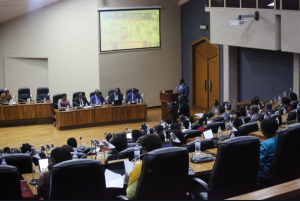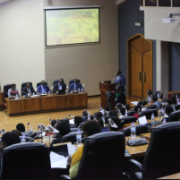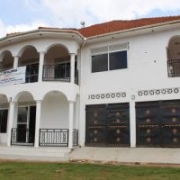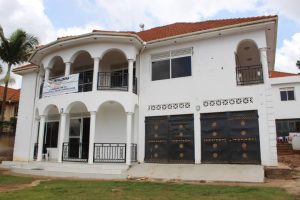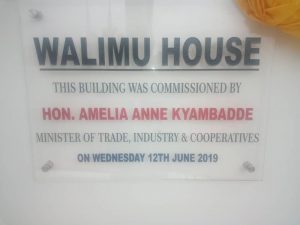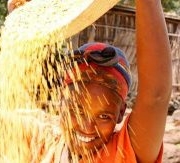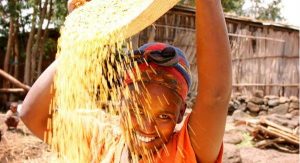KAMPALA, Uganda: The Minister for Finance, Planning and Economic Development Hon. Matia Kasaijja yesterday presented the Government of Uganda’s Income and Expenditure estimates for the financial year the 2019/20, with works, Security, Education, Energy, and Health, taking the lion’s share of the Shs.40.4 trillion budget.
Presenting the Budget at the Kampala Serena Conference Centre, Kasaija noted that although the economy grew impressively at 6.1%, leading to a growth in average domestic income from $800-$825 in the last financial year, the country continued to struggle with challenges of Unemployment, Income Inequality, and Malnutrition among children.
Kasaija noted that although formal employment had averaged better annual growth than the that of the economy at 9.8% between 2010 and 2017, with averagely 600,000 new entrants into the labor market annually, 4 out of every 10 young Ugandans remain out of work, while over 80% of the country’s total labor force remains underemployed in the informal economy.
On inequality, Kasaija noted that rural incomes were not growing fast enough despite Government’s affirmative action programs especially in the North and Eastern Uganda. “As a consequence, rural-urban migration has increased, putting undue pressure on urban social services,” he noted. “These challenges have compromised the potential of Uganda’s Urban areas to serve as engines of growth and structural transformation,” he added.
Despite the majority of the countryside being favorable to a variety of crop farming throughout the year, Kasaija also noted that the quality of life for children and mothers especially in rural areas remains wanting. “53% of children under five years are malnourished and hence anemic, while 29% of them are stunted or wasted. Many women of reproductive age are also malnourished, with 32% of them being anemic,” Kasaija found.
But while those in the rural areas continue to grapple with malnutrition, their more affluent urban counterparts are struggling with inappropriate feeding, leading to a surge of non-communicable diseases like Obesity, Cancer, heart diseases among others. “Consequently, Uganda has been spending on average, $500million mostly abroad, on the treatment of otherwise preventable diseases,” Kasaija noted.
Fixing the Challenges
In a bid to address this inequality, this year’s budget has been themed: “Industrialization for Job Creation and Shared Prosperity,” and focused on creating more jobs and sustaining growth that is “as equitably shared as possible,” according to Kasaija.
To do this, the 2019/20 budget has prioritized “Expanding the Industrial base of the economy” and “providing affordable financing for production and business,” as a way of promoting industrialization that’s linked to increased production in the Agricultural sector.
In the last financial year, Industry and Agriculture grew by 5.8% and 3.8% respectively, trailing the services sector which grew highest at 7.2%.
Even then, Kasaija noted, industrial production has grown with locally manufactured products on Ugandan supermarket shelves increasing from 15 to 40 percent, and expected to hit 50% by 2020. Kasaija also noted that Uganda’s Iron and Steel Industry had grown to now 24 industries, producing 1.7million tons per annum, from 866,000 5years ago. In the same period, the Cement Industry has expanded to 5 factories, more than doubling annual production to 4.4million tons, from 2million.
So has Agriculture Production. Coffee export volumes for example increased by 6% to 4.5million bags in 2018 from 4.2million in 2017, while Oil palm production in Kalangala increased by 55%, from 24,300 tons in 2016 to 37,800 tons last year. Milk and Fish volumes also increased by 19% and 27% respectively, between 2015 and 2018.
Even then, key challenges remain, from limited access to affordable credit for commercial agriculture and industrialists, to insufficient irrigation systems and limited access to extension services for farmers, and weak value-chain linkages between agriculturalists and industrialists.
Although Agriculture credit increased as a percentage of total private sector credit last year, at only 12.9%, it still remains low for a sector that employs nearly 70% of the country’s total labor force.
Interventions
As such, in the next financial year, Kasaija has set aside Shs.103.5billion for the further recapitalization of the Uganda Development Bank, and Shs.40b for the capitalization of the Micro Finance Support Center, to help SACCOs, Cooperatives and Industrialists access credit at not more than 20% interest rate. At a much lower level, the Youth and the women funds also received a boost of Shs.130b and 32billion respectively.
In regard to propping up industry, government intends to continue the development and servicing of 22 industrial parks across the country, which are supposed to act as pilot centers for Uganda’s export promotion and import substitution strategy, while at the same time creating jobs. To that endeavor, government has in the next financial year set aside Shs.147billion for the electrification of these parks, Shs.178billion to fund continued innovation, and Shs.103 billion to develop supportive export infrastructure in processing zones.
To support the commercialization of the Agriculture sector, Kasaija noted that government has set aside Shs. 1,054.6 billion prioritizing the provision of irrigation infrastructure, specifically the construction of five micro-irrigation schemes in Alebtong, Kabarole, Katakwi, Ntoroko and Gomba, and provision of post-harvest handling facilities in Bunyangabu, Kibuku, Kumi, Kyenjonjo, Ntoroko and Nakaseke districts.
The sector will also seek to link farmers to agro-processing facilities, as a way of developing Product value chains that link entrepreneurs to out-grower farmers and enable easier marketing of agricultural products.
Leonard Okello, the Chief Executive Officer at The Uhuru Institute for Social Development noted that it is a good thing government was refocusing attention on Agriculture and agribusiness: “There’s a reason why despite employing over 70% of Uganda’s labor force, Agriculture contributes less than a quarter of our total GDP, and I am glad government is moving to address this mismatch, with a view of increasing the sector’s productivity,” he said.
He, however, noted that a critical challenge for farmers and entrepreneurs in rural areas remained access to financial services, and agribusiness skilling, both of which the Budget did not strongly address. “Shs.40billion set aside for cooperatives is peanuts,” he told me.
According to data from the Uganda Cooperative registry, there are currently over 17886 cooperatives in the country, with a membership of over 10million members. 83% of these are either financial or agricultural cooperatives based in rural and peri-urban areas, where commercial Banks are reluctant to trade, because of the unreliability of farming income, and by extension, transactions.
The post 2019/20 budget: What is in it for farmers, Traders and Cooperatives? appeared first on The Cooperator News.
